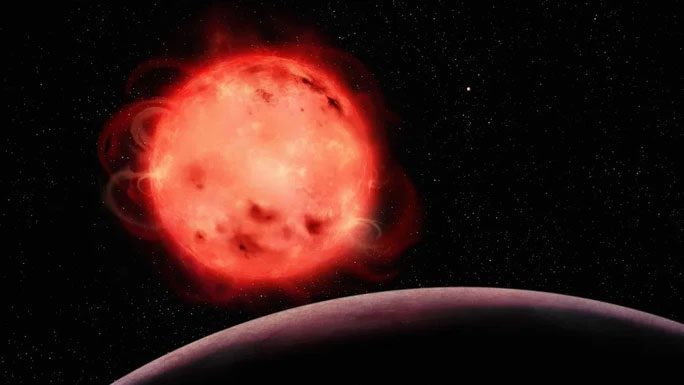The world’s most powerful space telescope, the James Webb Space Telescope, has “seen” some alarming features on the surface of TRAPPIST-1, a star that hosts seven Earth-like planets.
According to Space, the Mid-Infrared Instrument (MIRI) of the James Webb has observed the movement of TRAPPIST-1b, one of the planets orbiting the red dwarf star TRAPPIST-1.
TRAPPIST-1b initially sparked hope from early observations by NASA’s “planet hunter” TESS, as it is slightly heavier than Earth and is also a rocky planet.

Red dwarf star TRAPPIST-1 surrounded by 7 planets, each possessing some Earth-like characteristics – (Graphic from NASA).
Three months later, another planet, TRAPPIST-1c, came into view through the James Webb’s lens, revealing similar characteristics.
Bad news: They have revealed a “bare” body, devoid of an atmosphere. These two worlds seem more like the harsh Mercury than Earth, which is conducive to life.
The findings were reported by a research team led by astronomer Olivia Lim from the University of Montreal (Canada) after analyzing spectral data. This result dampened hopes for a thick hydrogen atmosphere on TRAPPIST-1b, but offered another interesting insight.
According to co-author Ryan MacDonald from the University of Michigan (USA), observing TRAPPIST-1b is quite challenging due to a “malevolent force” interfering, distorting the data, much like preventing scientists from understanding whether TRAPPIST-1b could harbor life.
This disruptive force has been identified as the red dwarf star TRAPPIST-1, the parent star of the planet. This does not imply that there is an extraterrestrial civilization on this star trying to prevent humans from studying their world; it is simply a result of the nature of red dwarf stars.
Red dwarfs like TRAPPIST-1 are known to be low-temperature stars, much weaker than the Sun, and are the most common type of star in the Milky Way galaxy, which contains Earth.
The new findings highlight how powerful a red dwarf can be, despite being the “coldest” type of star: Its surface exhibits violent, chaotic magnetic activity.
It is this magnetic activity combined with extreme radiation that may be causing this planet to appear “bare.”
However, it does not rule out the possibility that TRAPPIST-1b could still have a very thin atmosphere with water vapor, carbon dioxide, or methane. This means scientists still hold a glimmer of hope regarding the habitability of this world.
The star’s interference also indicates that scientists should find ways to address it, proposing some method to filter out noise when observing the planets TRAPPIST-1d, TRAPPIST-1e, and TRAPPIST-1f, the three planets most likely to support life.


















































